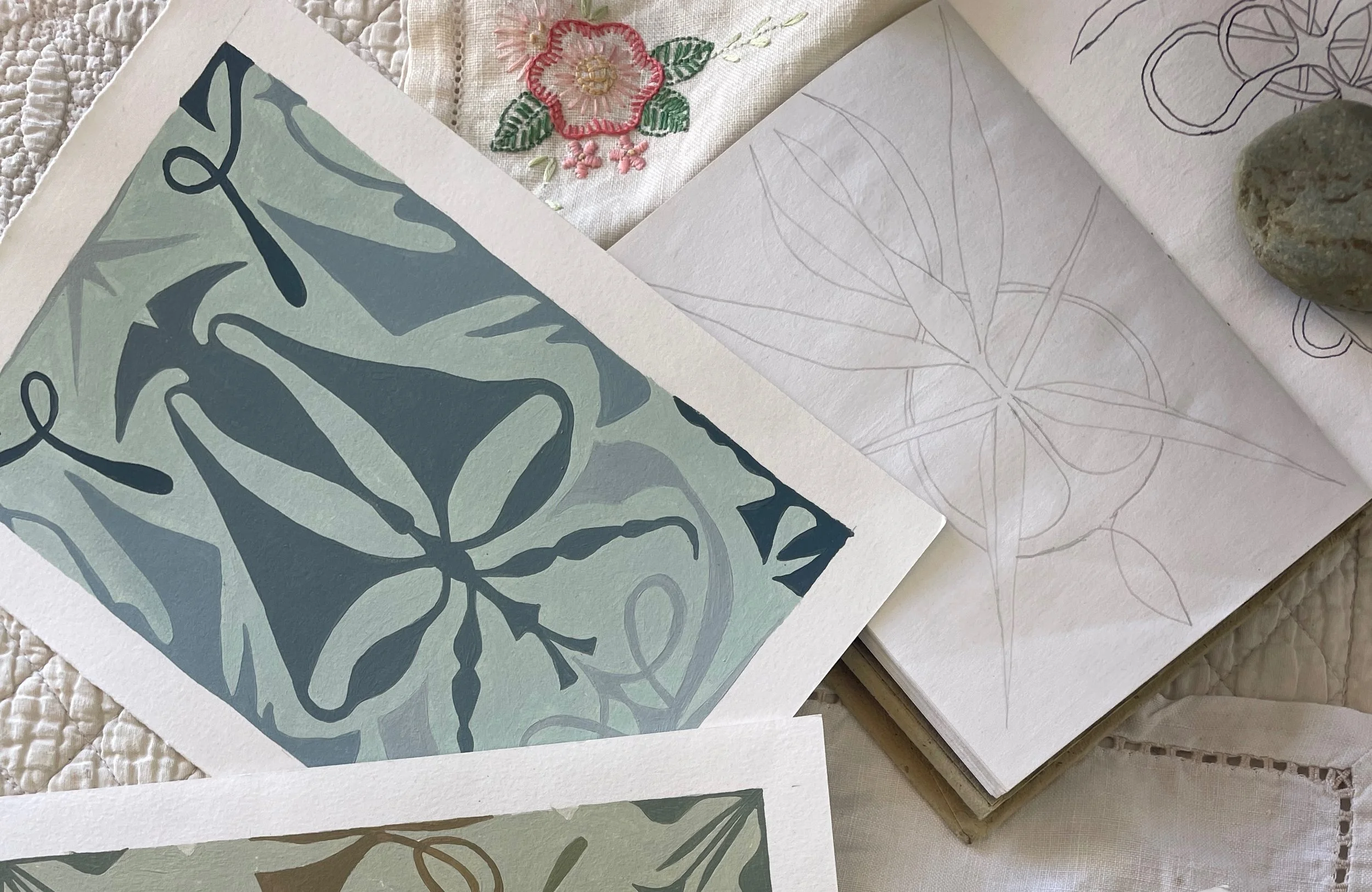morvoren
folktale pattern series
Believed to mean "mermaid" in Cornish—derived from mor (sea) and voren or morden, (maiden)— a term tied to the Mermaid of Zennor, a figure of a local folktale from the quiet coastal village of Zennor in West Cornwall.
Inside its medieval Church of St Senara, stands the famous Mermaid Chair, a pew featuring a centuries-old carving of a mermaid. She holds what appears to be a mirror or glass, echoing traditional British folklore where mermaids carry a mirror and a comb to groom their long hair. Though the chair’s origins are unclear, it’s widely believed to be connected to the legend of a mermaid who once vanished with a local man.
In designing this pattern, I was drawn to themes of reflection and the uncanny— central to many mermaid folktales. These stories often mirror human nature, forcing us to confront ourselves. They also raise questions about femininity, portraying the mermaid as a distorted, otherworldly version of womanhood shaped by male perception.
The people of Zennor were once known for their healing and singing, but eclipsing all of them was a mysterious woman who would appear at the chapel. She would enchant villagers with her extraordinary voice, then vanish over the hill for months or years, always returning unchanged and singing just as beautifully.
Eventually she caught the affections of a local man named Matthew Trewella, the parish’s best singer. One day he followed her, never to return. Neither were to return to the church in Zennor and the her true nature may have remained a mystery to time if it wasn’t for a chance encounter some time later.
Having moored in Pendour Cove, a sea captain reported to have seen a mermaid swim up to his boat and asked him to raise the anchor as it was blocking the entrance to her underwater home. She begged him to let her return to her husband and children and so, weary of the bad omens refusing a mermaid may bring, the sea faring man obliged and she disappeared into the depths of the cove.
Through word of mouth, locals in Zennor heard of this tale and believed it to be the same woman who had sung in the church and lured Trewella away from the village to live with her in the sea. Now the old pew stands in the church as a last physical reminder of this folk memory past down by generations.




